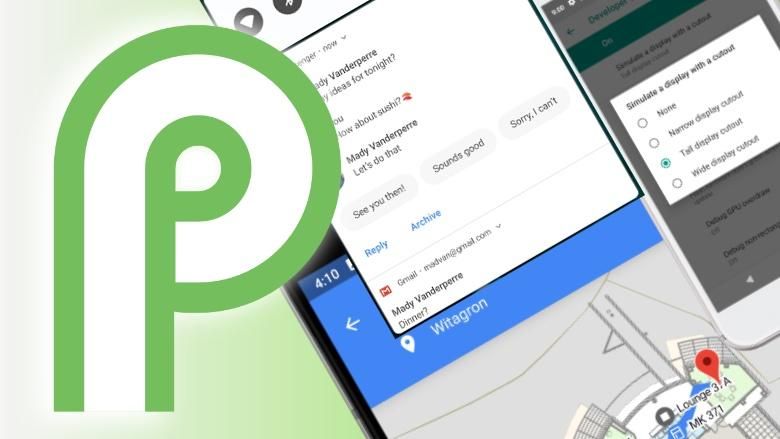The Android P Developer Preview is now underway for those who want to engage with major new features officially coming to the mobile platform later this year.
In addressing the most controversial hardware design motif of recent memory, Android VP of Engineering has announced that Android P will officially support “display cutouts,” otherwise known as “notches” containing cameras, earpieces and other such hardware that also allow for more screen real estate to be included on the device.
Overall, the look of Android appears to be trending towards larger elements with clearer delineations between them. The Material Design motif has adopted rounded corners to content cards. Within those cards in the notification block, there’s a new MessagingStyle API that will allow for robust responses and more actions to respond to pictures in full view and other messages right from the shade — this includes Smart Replies.
On media, the Multi-camera API will let applications access multiple streams from multiple cameras of a device for raw or manipulated output. For the first time, there is a dedicated API for screen-based flashes and there’s also open access to OIS timestamping for superfine software tweaks to footage. Google continues to support the VP9 streaming video codec with an adoption to HDR. The HEIF image codec — what industry people say is the end of JPEG — is also getting some play on P, about a year since Apple officially began supporting it.
Regarding security, any fingerprint sensing task will be reformatted under a consistent user interface. Apps in an idle state are also now restricted from access to microphones, cameras and any sensors.
Developers are being put on notice to target their apps to API level 26 by this November. Users attempting to install any apps targeting API Level 17 or lower will be notified with a dialog box — that threshold will be raised over time. Also, Google is encouraging app makers to move away from private Android libraries and interfaces and replace them with public equivalents where possible and to engage with the company on this issue as roadblocks occur.
The files are available here for flashing onto the Pixel, Pixel XL, Pixel 2 and Pixel 2 XL. We may expect a new round of the Android Beta Program, which allows enthusiasts to experience early Android P through OTA updates, in the coming months getting “closer to a final product.” You can see a complete rundown as well as item-by-item descriptions of features we have not covered here at the source link below.

